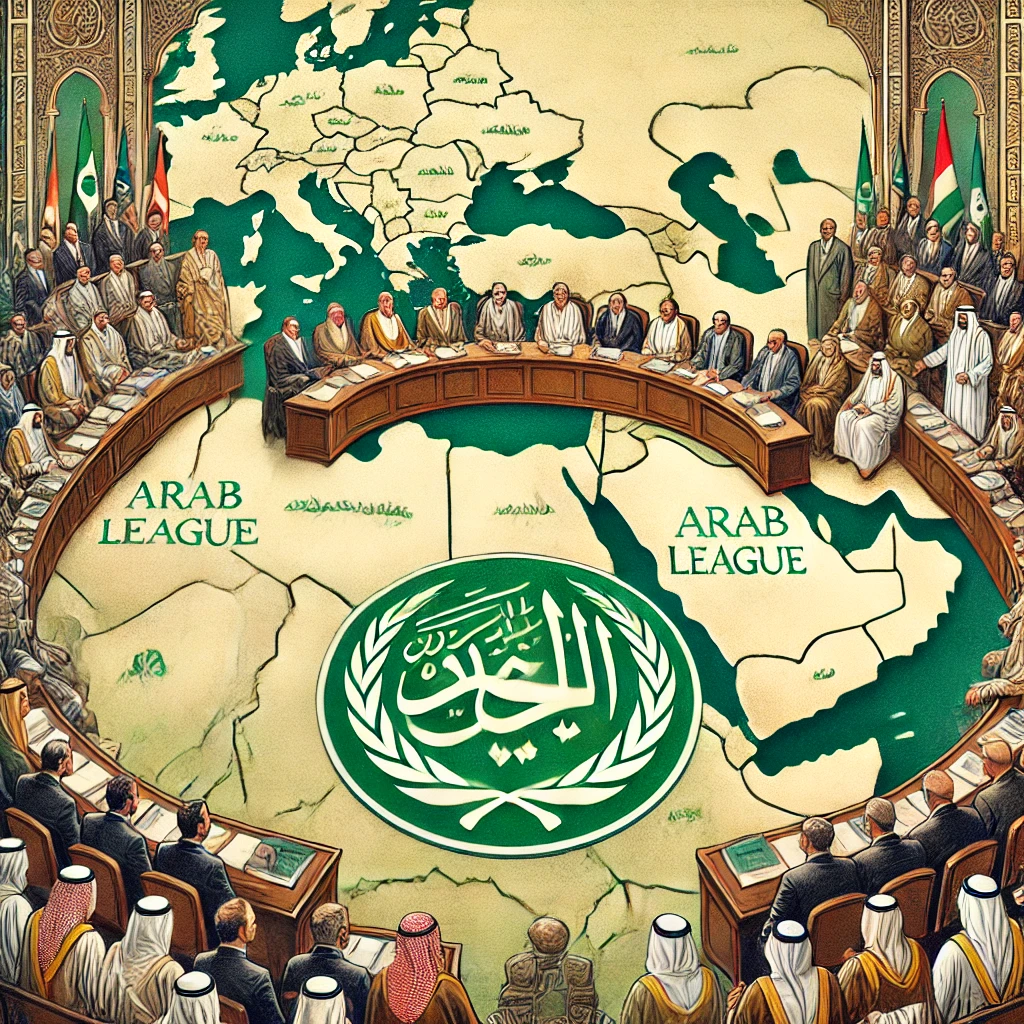The Arab League, formed in 1945, aims to strengthen political, economic, and social ties among its 22 member countries. Despite criticism of its effectiveness, the League remains a significant entity in regional politics. The re-admission of Syria highlights the ongoing challenges and evolving dynamics within the Middle East. For India, the Middle East and North Africa (MENA) region holds strategic importance due to historical ties, energy resources, trade, and the presence of a large Indian diaspora.
- UAE, Qatar, Oman, etc., and India share good ties as India gets maximum remittances from Gulf countries, which are over $48 billion.
- India’s total bilateral trade with the Arab world stands at over US $189 billion. India’s crude oil imports from Arab countries are about 60%.

What is the Arab League?
The Arab League, also known as the League of Arab States (LAS), is a regional organization of Arab countries in the Middle East and North Africa. Formed in Cairo in 1945 following the adoption of the Alexandria Protocol, the Arab League aims to foster cooperation among its member states and address regional issues.
The Arab League is an intergovernmental pan-Arab organization established in Cairo, Egypt, on March 22, 1945. It was formed following the adoption of the Alexandria Protocol in 1944. The organization aims to strengthen ties among Arab states and coordinate their political, cultural, economic, and social programs.
Members of Arab League
The Arab League currently consists of 22 member states, including:
- Algeria
- Bahrain
- Comoros
- Djibouti
- Egypt
- Iraq
- Jordan
- Kuwait
- Lebanon
- Libya
- Mauritania
- Morocco
- Oman
- Palestine
- Qatar
- Saudi Arabia
- Somalia
- Sudan
- Syria
- Tunisia
- United Arab Emirates
- Yemen
Objective
The primary goals of the Arab League are to strengthen and coordinate the political, cultural, economic, and social programs of its members. The League also aims to mediate disputes among member states and between them and third parties. Additionally, it fosters joint defense and economic cooperation, as reflected in the 1950 agreement on these issues.
Concerns
The Arab League faces criticism for its inability to effectively address regional issues. Concerns about its relevance and effectiveness have grown, with critics pointing to postponed events, disunity, poor governance, and representation of autocratic regimes. These issues undermine the League’s capacity to enforce decisions and resolve conflicts among its members.
Why has Syria Readmitted to the Arab League?
Syria’s re-admission to the Arab League marks a major diplomatic development after more than a decade of suspension. This move highlights a shift in regional dynamics and a potential path toward resolving the prolonged Syrian crisis. The decision underscores a complex interplay of political, humanitarian, and strategic considerations among Arab states.
Suspension
In 2011, Syria was suspended from the Arab League following its violent crackdown on anti-government protests. The Arab League accused Syria of failing to comply with a peace plan that mandated military withdrawal, the release of political prisoners, and dialogue with opposition groups. This suspension led to severe economic and diplomatic repercussions for Syria, exacerbating the nation’s isolation.
Readmission
Syria’s readmission to the Arab League signifies a softening of relations between Syria and other Arab nations. This move is crucial for addressing the humanitarian crisis, which has displaced half of Syria’s pre-war population and caused over 300,000 civilian deaths. A committee involving Egypt, Saudi Arabia, Lebanon, Jordan, and Iraq will work towards resolving the Syrian crisis, though individual Arab states will decide on resuming diplomatic ties with Syria.
What is Significance of Middle East/North Africa (MENA) for India?
The Middle East and North Africa (MENA) region holds substantial strategic and economic importance for India. Strong historical ties, energy resources, trade, and the Indian workforce in the region are pivotal to India’s interests, making MENA a key focus of Indian foreign policy.
Middle East
India has long-standing relations with Middle Eastern countries, particularly in the areas of oil and gas trade. The region is vital for India’s energy security and economic interests. Additionally, a significant number of Indians work in Gulf countries, contributing to substantial remittances that support India’s economy.
North Africa
North Africa serves as a strategic gateway to Africa for India, facilitating trade and economic ties. The region’s potential for clean energy, particularly solar and wind, aligns with India’s renewable energy targets. North Africa’s strategic location, especially with the Suez Canal, makes it crucial for global trade routes, further enhancing its significance for India.
Conclusion
The Arab League’s re-admission of Syria marks a significant turning point in Middle Eastern geopolitics, reflecting a shift towards reconciliation and stability. For UPSC aspirants, understanding these dynamics is crucial, as it highlights the complex interplay of diplomacy, regional cooperation, and conflict resolution. This development reinforces the importance of studying international relations and India’s strategic interests in the MENA region.


